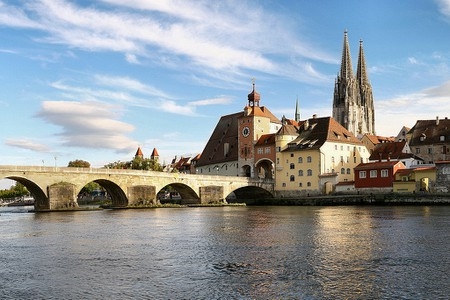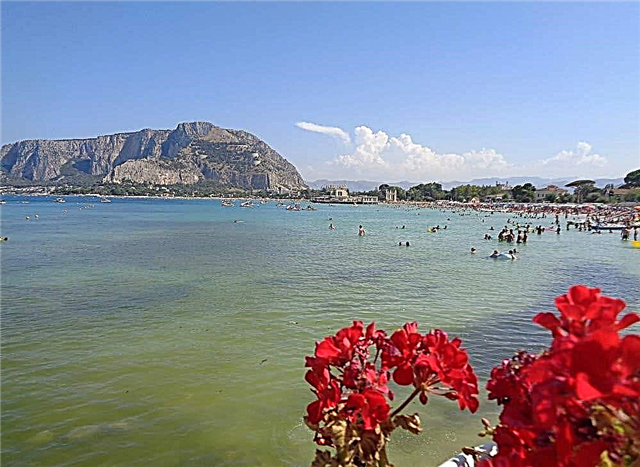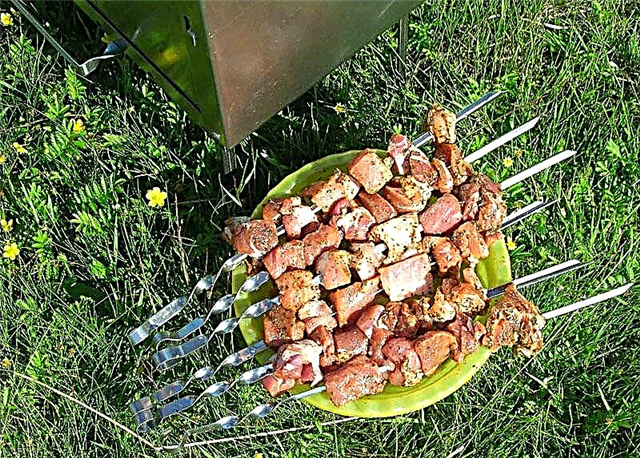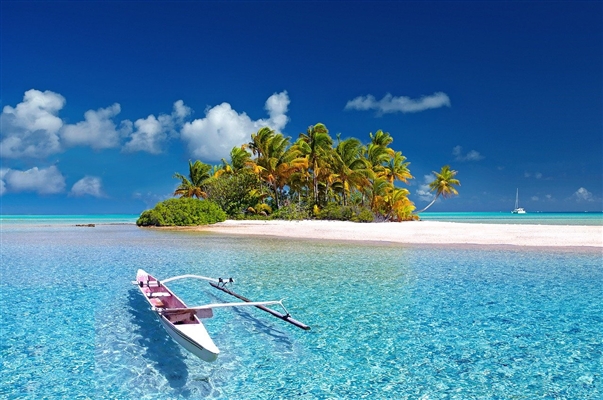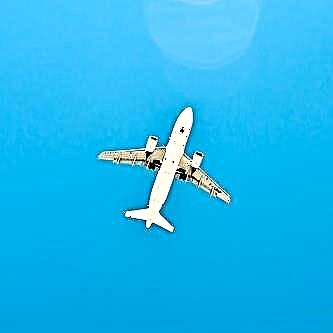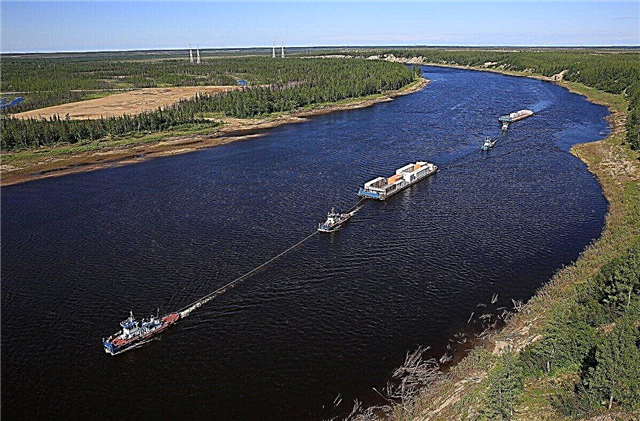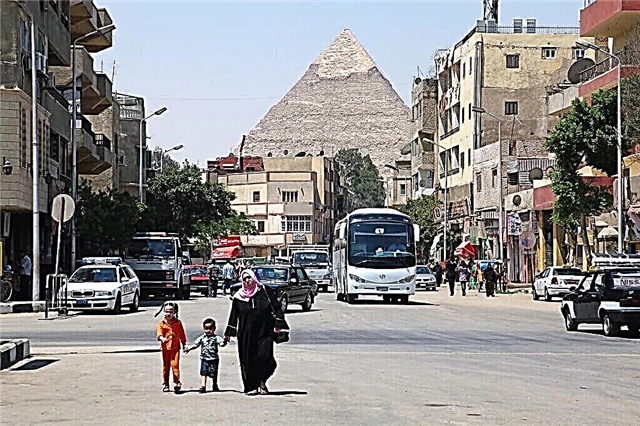Most of Egypt's cities are based on the banks of the Nile or in its delta. The main waterway of the country through artificial canals reaches many other settlements. The capital Cairo is the largest city. If we take into account the neighboring El-Giza, then the number of inhabitants of the agglomeration will exceed 13.5 million people. Therefore, in the last century, a state program was launched to increase the population outside the capital region. It has produced a result: even in the once modest Al-Ashir-min-Ramadan, the number of inhabitants has grown by a third in 15 years.
Egypt is home to one of the world's main attractions - the pyramids. Many tourists combine viewing local antiquities with a good rest on the beaches of Hurghada and other resorts.
The largest cities in Egypt
List of the largest cities in terms of population in the country.
Cairo
The capital of Egypt and the third largest city in Africa. Old Cairo stretches along the east coast of the Nile. Modern districts are very different from the disorderly buildings of past centuries. Once on the walls of the Citadel of Salladin, you can view the panorama of the city. The Egyptian Museum has a collection of local art from different eras. Khan el-Khalili Crafts Bazaar is the largest market in the Middle East.
Population - 9 293 612 people (2018).

Alexandria
The main port of the country. Unlike other cities in Egypt, it is dominated by the Mediterranean, not the oriental style. Until now, any construction site in the city turns into excavations with the discovery of antiquities. The most famous surviving ancient monument is the Pompey Column. Not far from it are the Kom-el-Shukafa catacombs - a labyrinth with burial niches, levels, stairs and numerous symbols.
Population - 4 870 000 people (2016).

El Giza
It is located 5 kilometers from Cairo and practically merges with the capital. The first official zoo in Africa was opened here. City parks are designed to green Giza and make your stay in it more comfortable in the heat. The most famous holiday destination is Oman Park. In the vicinity of the city there are the most famous sights of Egypt - the pyramids and the Sphinx.
Population - 4,212,750 people (2018).

Shubra el-Kheima
It is part of the metropolitan area of Cairo. The metro line leads to the capital. The city was originally inhabited by families of workers from nearby factories. Now the specialization of residents is not so pronounced. In addition to industrial enterprises, bazaars, shops, clubs, cafes operate in Shubra el-Kheim. Great potential for tourism. The Fountain Palace is the main attraction.
Population - 1 187 747 people (2018).

Port Said
The Arabic name is Bur Said. Port at the northern entrance to the Suez Canal. Ships passing nearby make a stop in the city for refueling. There is a free trade zone. A resort is founded nearby. Initially, the Statue of Liberty, the symbol of New York and the United States, was supposed to be installed in Port Said, but the authorities considered it too expensive to transport it from France.
Population - 760,152 people (2018).

Suez
Port at the southern entrance to the Suez Canal. A transit point for Muslims on a pilgrimage to Mecca. The city was badly damaged during the military conflict between Israel and Egypt in the middle of the last century. A war memorial reminds of these events. Sights of the area: Ain-Sokhna resort, Serbet El-Khadim temple, Old Testament springs “Ain-Musa”.
Population - 740,874 people (2018).

El Mansoor
It stands on the eastern bank of the Dumyat River, a tributary of the Nile. Together with the city of Talha, which stretches on the west bank, it forms a metropolis. El-Mansoor is conditionally divided into two large territories. The old city boasts the Shinnawi Palace and Ibn Lukman's courtyard. In a more modern area, there is a large university and a library, where rare copies of books are collected.
Population - 570,271 people (2018).

El Mahalla El Kubra
It is located in the north of the country in the central part of the Nile Delta. One of the educational centers of Egypt. There are many primary and secondary schools, as well as 5 colleges. The textile industry and commerce are the foundations of the economy of El Mahalla El Kubra. The main attraction is the ancient Alt-Mutvalli mosque, which was rebuilt in the 15th century.
Population - 543,271 people (2018).

Tanta
From here to the capital is less than 100 kilometers. The territory of the district is crossed by canals. Each early spring is accompanied by sand and dust storms. On the outskirts of Tanta, there are gardens with citrus trees and date palms. Every year, during the week, the city receives Muslim guests from different countries: they come to a celebration in honor of the Sufi Ahmad Al-Badawi.
Population - 528 672 people (2018).

El-Fayum
The most ancient city of Egypt is located in the oasis of the same name and is surrounded by the Libyan Desert. A canal has been laid from El-Fayyum to the Nile. There are many interesting places in the city and its surroundings: the Floating Mosque, the ancient necropolis of Hawara, the largest waterfalls in the country, El Rayan, "Valley of the Whales" - a paleontological monument included in the UNESCO World Heritage List.
Population - 489,377 people (2018).

Assiut
The ancient name is Lycopolis. Textiles, footwear and carpets are the backbone of the city's economy. At the beginning of the last century, the first Egyptian shelter was opened here. From Assiut, excursions to the oases start, of which there are quite a few nearby. Sightseeing: Maizub dam, religious institute, Alkasan Pasha palace, remnants of the southern settlement of Deir Mukalla.
Population - 480 516 people (2018).

Hurghada
One of the main resorts in Egypt is located on the coast of the Red Sea. The best hotels are concentrated in the Sakkala area. For shopping it is worth going to the El Dahar area. Water parks, diving, boat and bus excursions, surfing - any type of recreation is available in Hurghada. The city has both modern sights, such as an aquarium, and more traditional for the east, for example, the Abdulhasan Elshazi mosque.
Population - 400 901 people (2018).

Ismailia
Located on the shore of Lake Timsakh. In the vicinity of Ismailia in 2001, the construction of the world's longest swing bridge was completed. The City Museum invites visitors to view the collection of archaeological finds collected in the territory of Upper Egypt. French architecture is common in the city. One of the most striking examples is the Church of the Most Holy Theotokos.
Population - 397 446 people (2018).

Ez-Zakazik
The center of the cotton industry is located 76 kilometers from the capital. The main museum of Ez-Zakazik is named after the commander Arabi Pasha. Several notable ruins can be found in the suburbs. Among them are the ruins of Bubastis, the capital of the 13th nome of Ancient Egypt, as well as the remains of a temple built during the reign of Piopi I. Nearby are the catacombs, which have become a cemetery for sacred cats.
Population - 396,852 people (2018).

Medina-Sittat-Oktober
The translation of the name is "the city of October 6th". It was named so in honor of the successful actions of the Egyptian army during the conflict with the Israelis in 1973. The African Football Confederation is based in Medina Sittat Oktober. The city is part of Greater Cairo and is only 22 kilometers away from the capital. The largest information complex in the country is located here.
Population - 355 616 people (2018).

Aswan
The southernmost Egyptian city. For sightseeing on the islands and on the left bank of the Nile, it is best to hire a boat with a sail - felucca. Notable places: the Aga Khan mausoleum, granite quarries, the hotel where Agatha Christie wrote the novel Death on the Nile. With exotic plants and flowers, Aswan is like an open-air botanical garden.
Population - 337 472 people (2018).

Dumyat
Port on the Mediterranean coast. The city is connected with the Nile by a canal.New Dumyat is being built on the western outskirts. The okrug is famous for its confectionery products, and first of all - for oriental sweets. Defensive structures, which were used for their intended purpose in the past during numerous wars, have now been transferred to the rank of tourist sites.
Population - 289 833 people (2018).

Damanhur
Located in the north of the country. In the past, the city was the capital of the 7th nome of Ancient Egypt. Now it has been turned into an industrial center. Cotton and rice are actively traded here. Due to the transport interchange, goods are delivered to different regions. Sightseeing: At-Tuba and Al-Habashi mosques, the building of the municipal library, the opera. The best souvenirs from Damanhur are dates and carpets.
Population - 278 413 people (2018).

El Minya
Occupies part of the west coast of the Nile. Almost all streets intersect at right angles. In some areas, mansions built by Italian architects have survived, but their condition is deplorable. The monastery of the Most Holy Theotokos was founded 20 kilometers from El Minya. In recent years, two large necropolises with mummies and jewelry have been unearthed in the vicinity of the city.
Population - 254 523 people (2018).

Luxor
In the past it was called Thebes and was the capital of Ancient Egypt. On the right bank of the Nile is the "city of the living" - a residential area where, among other things, hotels are concentrated. On the left bank stretches the "city of the dead" - an area that became famous thanks to the burials. Luxor attracts hundreds of thousands of tourists a year. Ancient temples, mosques, embankments, bazaars, Fruit Island, excavation sites - there are several dozen remarkable objects in the area.
Population - 250 704 people (2018).

Shibin el-Kom
Although the province to which the city belongs has a focus on agriculture, Shibin el-Kom itself relies heavily on trade and industry. The infrastructure continues to modernize. President Hosni Mubarak, who has been in power for 30 years, was born in the suburbs. The most famous museum in the area is called Denshui and also serves as a cultural center.
Population - 249 611 people (2018).

Sohag
Stretches in the middle reaches of the Nile. An important transport hub with a railway station, river port and airport. The building of the latter was opened in 2000, and it was built in the style of ancient Egyptian structures. There are two monasteries in the suburbs: Red and White. The first was named after the color of the brick from which its walls were laid, and is well preserved, the second is almost destroyed.
Population - 248,174 people (2018).

Beni Suefe
An agricultural center that received an impetus for development in the first half of the last century. Also in the city they are engaged in the production of carpets and the processing of cotton. Beni Suefe is famous for its alabaster. There are interesting objects in the vicinity: the Meidum pyramid of Sneferu, which at first had 7 steps, and then the 8th was added, and the monastery of St. Anthony.
Population - 246 395 people (2018).

Ken
The center of the province of the same name in the Nile Valley. The city has been known since the time of the Roman conquests. Since then, pottery has been developing here. The Dandara region, which gradually separated into a separate settlement, is a place where the sights of the district are concentrated. Among them, the temple of the goddess Isis stands out. It is famous for its heavenly map, which is more than 3500 years old.
Population - 241 422 people (2018).

El Ashir min Ramadan
One of the most modern cities in Egypt is located in the eastern part of the Nile Delta. From here to Cairo about 60 kilometers. The founding of Ashir min Ramadan in 1970 was part of the country's job creation program. Excursion tours most often include trips to other settlements, since there are few attractions in the city.
Population - 226 953 people (2018).


